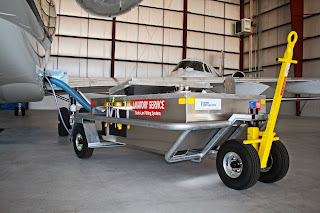Balancing Speed and Efficiency with Safety for Ground Crew and GSE
Any member of an airside ground crew, which certainly includes the
management, will tell you that the work can be pretty high-stress. They
are operating under two mandates which are not only often in
competition, they can seem fairly contradictory. Those mandates are: “Do
the job as quickly as possible!” And, “Be thorough, complete
checklists, double-check, make no mistakes, be careful, and be safe.”
Although both of those priorities make sense from the perspective of the
airlines and those airside serving at the pleasure of those airlines,
delays on the ground can cost millions—literally. Not even just big
delays. According to an industry report, a large airline loses as much
as $35 million (USD) annually for every additional five minutes
of ground time. According to the same report, it’s also pointed out that
the International Air Transport Association (IATA) estimates that the
aviation industry would save $4 billion annually by taking preventative
safety measures. More specifically, by “improving safety and reducing
damage to aircraft and ground vehicles.”
So how can the ground crew work as quickly as possible while also ensuring that there are no oversights or mistakes—a single one of which can not only cost millions but lead to consequences far more dire?
So how can the ground crew work as quickly as possible while also ensuring that there are no oversights or mistakes—a single one of which can not only cost millions but lead to consequences far more dire?
Staying on Top of GSE Maintenance
This may seem obvious, but in the fast-moving, high-intensity pressure cooker of aviation ground work, it can be easy to put off scheduled maintenance of the GSE or procrastinate on dealing with a fault code that isn’t going to immediately result in equipment failure.
The true cost of cutting those corners and whatever trivial amount of time was saved by dragging feet on maintenance, upkeep, and repair becomes far too clear when an aircraft tug breaks down on some access-blocking part of the apron or taxiway. That’s the sort of event that would likewise contribute to considerably more than five minutes of ground time.
And unfortunately, breaking down can be the best-case scenario for a GSE failure. If one of those same aircraft tugs experiences a failure while attempting to dock, thousands of dollars of additional damage can be done and the aircraft can become jackknifed, etc. Basically, nothing good can come from failing to stay right on top of maintenance and repair, but a whole lot of bad can.
Leveraging the Best Technology
There are a number of technological advances that can make and have made the work of ground crews easier, safer, and more efficient. More comprehensive additions like an entire GSE fleet linked by digital telematics and tracking can certainly improve safety and efficiency. But those improvements can be simple too. Lighting is a good example.
Replacing older light sources with LEDs can help considerably, both interior and exterior. Navigation lighting for an aircraft pushback tractor, headlights, signal lights, flashing beacons, backup-warning lights—anything that can provide a crew member with a better view of the job they’re doing or successfully advise aviation staff of a caution can be improved with high-quality lights.
Most important of all, however, is good communications between on-ground crew and management and coordination staff, a well-maintained and serviced GSE fleet, and a commitment to doing the job right.
About AERO Specialties
AERO Specialties is dedicated to both quality and customer service. As part of that dedication, they ensure that all AERO Specialties’ team members, including sales and support staff, not only understand the equipment but also have an extensive, detailed understanding of aircraft handling and maintenance. AERO Specialties specializes in aircraft tugs, aircraft solutions in baggage and cargo handling, intercom systems, hydraulic fluid services, and aircraft lighting. They offer such parts as towbar and towbar head ball lock pins, shear pins, oxygen charge adapters, nitrogen service adapters, ground power unit cables, and many more parts to support your equipment fleet.
To optimize the quality and efficiency of GSE, visit AERO Specialties at Aerospecialties.com




Comments
Post a Comment